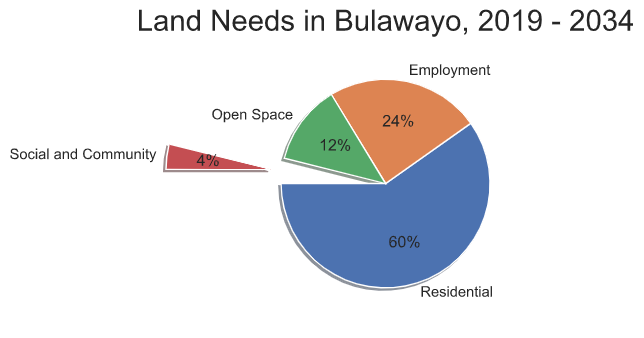Byo seeks more land to meet housing demand

The Bulawayo City Council (BCC) is seeking to expand its boundary to accommodate a huge demand for land for housing with authorities anticipating a population boom in the next 14 years.
According to the 2019-2034 master plan, Bulawayo, seeks to among other things ensure the availability of suitable land to meet the future needs of the city, establish a strong and sustainable local economic base, ensure adequate and suitable developable land is made available for industrial and commercial activities.
The master plan also seeks to ensure that provision is made for adequate social and community facilities to meet the city’s needs during the plan period, to establish a road network system that allows safe movement for all road users and inter-linked to other transportation modes to ensure good access to all sectors in the city and to develop Bulawayo into an environmentally conscious and environmentally sustainable city.
According to the master plan, the local authority estimates the population to grow to 1 524 899 which is almost double the Zimbabwe National Statistics Agency (Zimstat) estimates of 809 094.

“The medium growth scenario is chosen as the most probable scenario that is most likely to occur during the plan period,” the city master plan statement notes.
The local authority also noted that the estimated population growth depended on a number factors.
“Birth rates are slowly falling due to increased use of contraceptives and the desire for smaller families. Rural to Urban migration continues to occur due to Rural poverty, landlessness and aspirations among the youths for an urban lifestyle “bright city lights”.The impact of HIV/AIDS and other pandemics in the city is still being felt,” said BCC in the master plan statement.
“The population remains very young with nearly 60% under 24 years. This means that there are an increasing number of women in the fertile age groups which will continue to contribute to population increase. There is a decline in life expectancy.”
In order to meet the demand for housing and other uses, the city needs 27 995 hectares, which will see the city expanding beyond its current geographical borders.

The city housing backlog currently stands at about 130 000.
For housing the city needs 16 741 ha, with the bulk (13 393 hectares) reserved for high density residential development while 2 511 hectares will be for medium density residential development and 837 hectares for low density development.
A high density housing stand ranges between 200 and 300 square meters, while a middle density stand ranges between 600 – 800 square meters and low density stands its 1000 square meters and above.
The other land needs are for Employment 6 693 ha, Open Space 3 468 ha and Social and Community 1 093 ha.

“Despite the fact that there exists some developable land within the current Municipal boundary the Master Plan will need to allocate land outside the existing Municipal boundary to meet the projected land requirements over the plan period,” read the statement.
The housing development plan will also see the refurbishment of the city`s old suburbs such as Makokoba.
The master plan also indicated that key services such as access roads, supplies of water, sewerage, electricity and telecommunications, will have to be improved to match the population growth.
“The completion of the Gwayi-Shangani Dam, pipelines and pump stations to convey bulk water from the Gwayi River in the north close to the Zambezi, terminating at the north western boundary of Bulawayo at Cowdray Park. A link pipeline from the Zambezi River at Deka Mouth, to the main pipeline from Gwayi-Shangani Dam. Addressing the issue of waste water discharge into Khami Restoring the use of the Dam as a water supply source. Diversify water resources to lessen dependence on surface water. Schemes to be pursued include development of ground water supplies from the Karoo/Kalahari aquifer along the main pipeline corridor and from the Nyamandlovu aquifer to the north west of Bulawayo,” the statement reads.
The city is also planning to overhaul its public transport system to provide an efficient service to residents.
”The Plan will embrace a variety of forms of public transport, including conventional buses, commuter omnibuses, trains and taxis,” reads the master plan statement.
“Due consideration will be given to the introduction of other modes of public transport such as trams. The City Council to ensure that a study of the long term car parking needs for the City Centre is undertaken.”
Under the proposed master plan, the city seeks to establish a road network system that allows safe movement for all road users and inter-linked to other transportation modes to ensure good access to all sectors in the city.
However, the local authority has noted that financial challenges could hamper the implementation of the master plan.
“The lack of financial resources to implement development proposals is one of the main constraints in the implementation of master plan proposals,” said the local authority.






